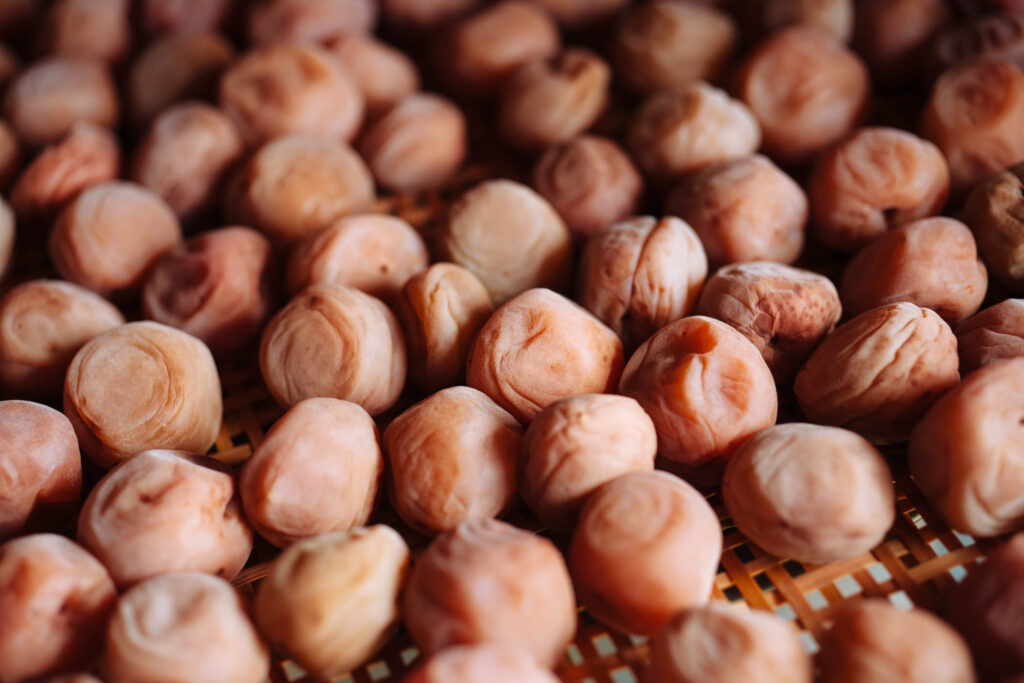A shiso laced ume sorbet looks like heaven on a spoon
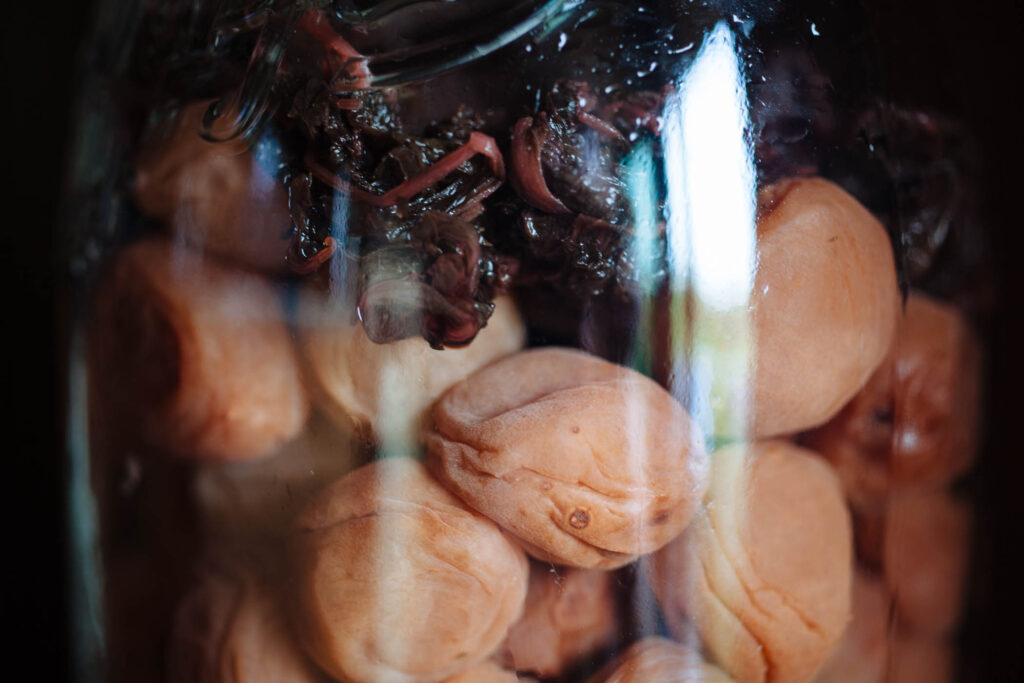
During a midsummer run of high heat in late July known as the doyo, the sun blazes and the cicadas roar. It’s a hot, dry (if you don’t count the humidity) interval between the tsuyu rainy season and stormy August skies seen when turbulent typhoons threaten to roll in. We rely on this clear stretch to set the salted ume out to dry, a process that tenderizes the flesh and softens the outer skins, improving the texture.
It almost looked like the doyo wouldn’t happen this year with a rainy season that felt particularly long and relentless. But the skies cleared late last week. The ume have been steeping in their own brine in large buckets since I salted them in mid-June. Opening the buckets released a glorious plumy fragrance that filled the room. I gathered up the shawl of red shiso scattered over the ume and set it aside. I strained the plums, careful not to break their fragile skins and careful to send all of the precious brine back into the buckets. From a high shelf I pulled a stack of large round shallow baskets woven from bamboo and dusted them off. They are stained from years of drying ume. I spread the plums among them in a single layer and carried them out into the sun beating down on Kuniko’s balcony. It’s best to carefully arrange them to create space where air can flow around each one, but with a 20 kilogram batch, mine are often over crowded. When the sun falls behind the house in the late afternoon I brought the baskets inside and covered them with a single sheet of paper to keep out the household dust. On the second day I turned each one over to give the underside time in the sun. Set them out, bring them in, turn them ocassionally, this is the rhythm of drying ume over three or four days.
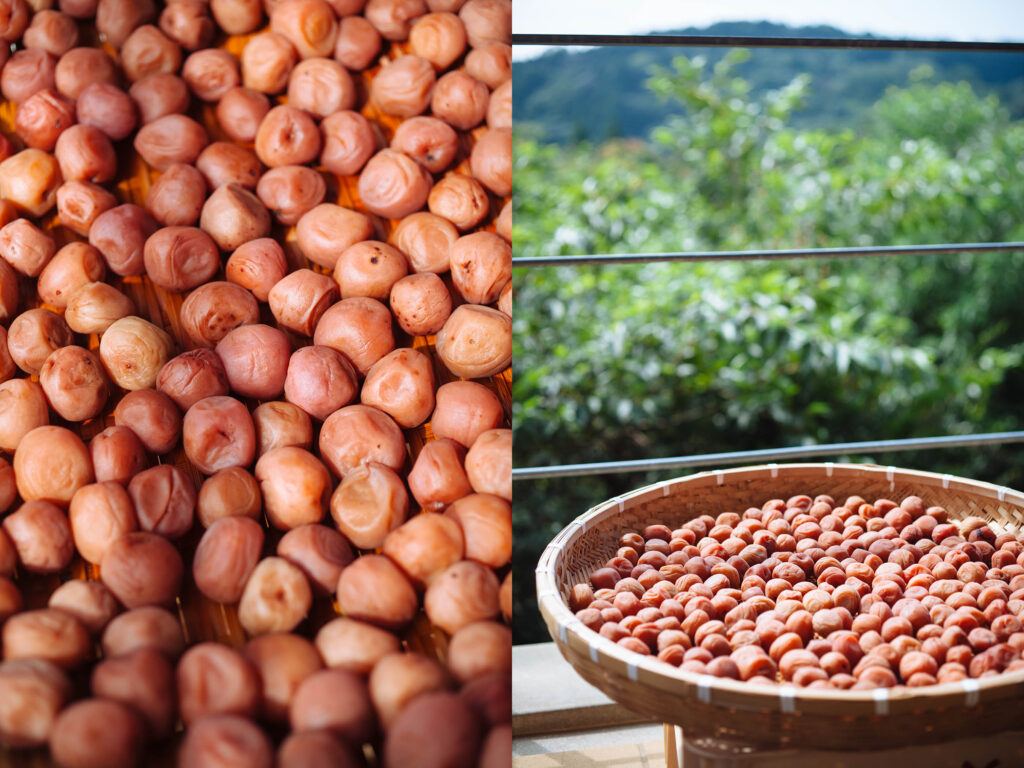
When the the skin of the umeboshi is loose and wrinkled like a grandmother’s hand it’s ready to store away. Customs differ house to house. Some store them dry and reserve the umesu, not a true vinegar but a salty sour brine used as such, for cooking. Others, like myself, store the pickled plums submerged in their own brine where they will mellow and grow more tender. I divide the reserved leaves of shiso to layer on top before closing up the jars. These days when you read about umeboshi, shiso’s role is often reduced to that of a dying agent, used solely to impart its reddish purple color to the umeboshi. But in fact shiso is naturally antiseptic and layering the shiso atop the umeboshi seals them in and creates a barrier against mold.
Kotoshi no ume wa tokubetsuni kirei, Kuniko told me. The umeboshi are particularly beautiful this year. I think so too. It’s been a bit of trial and error over these last few years getting my red shiso to ume ratio right. When it comes to umeboshi, nothing is set in stone, Kuniko has often told me. You make it one way one year and another way another year. You decide what you like and make it to your own taste. This year’s batch, salted at 15% by weight with one bundle of red shiso (8-12 stalks), is likely to be my personal formula going forward as the dusty rose hue is just exquisite.
Sliding the wooden door of Kuniko’s pantry open, a waft of cool, dry air spills out. With my bare feet against the cold tiles, I pause to take in a moment of invigorating sweet relief. I might like to stay here all day. Each year we reshuffle the many jars of umeboshi from years past that line two shelves, nearly full and buckling, to make room for the newest batch.I crouch down and push this newest vintage as far back as I can behind the others. Our heavily salted umeboshi are intended to age a long time. It could be eight to ten years before we open these jars again. With each passing year, the flavor matures and mellows from intolerably salty to mild.
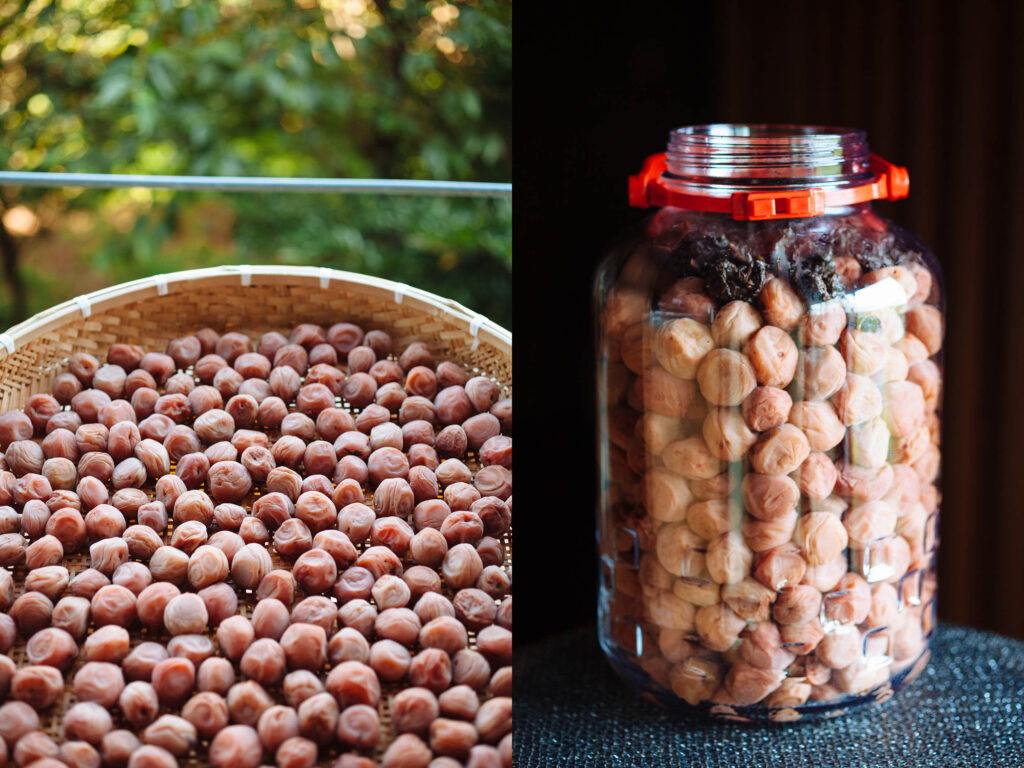
During the drying days I took some time to reorganize the pantry and reassign the contents of half empty jars to more appropriate sized containers. I found several jars of ume floating in a sugar brine, a lightly fermented ume syrup that is our version of umeshu or ume liqueur. In order to consolidate, I strained out the ume and bottled the sweet liqueur and found an opening for them on the shelves next to a large box. Out of curiosity I peaked inside the box and discovered 12 more bottles of umeshu. I burst out laughing at the almost ridiculous reserves of a drink one rarely uses and only in the smallest quantities. There’s umeshu in here going all the way back to 2009, I said. Kuniko assured me not to worry as it gets more and more delicious with age. Which is all find and well but in all honestly I have never actually seen her use it so it’s time to dive into finding ways to use it.
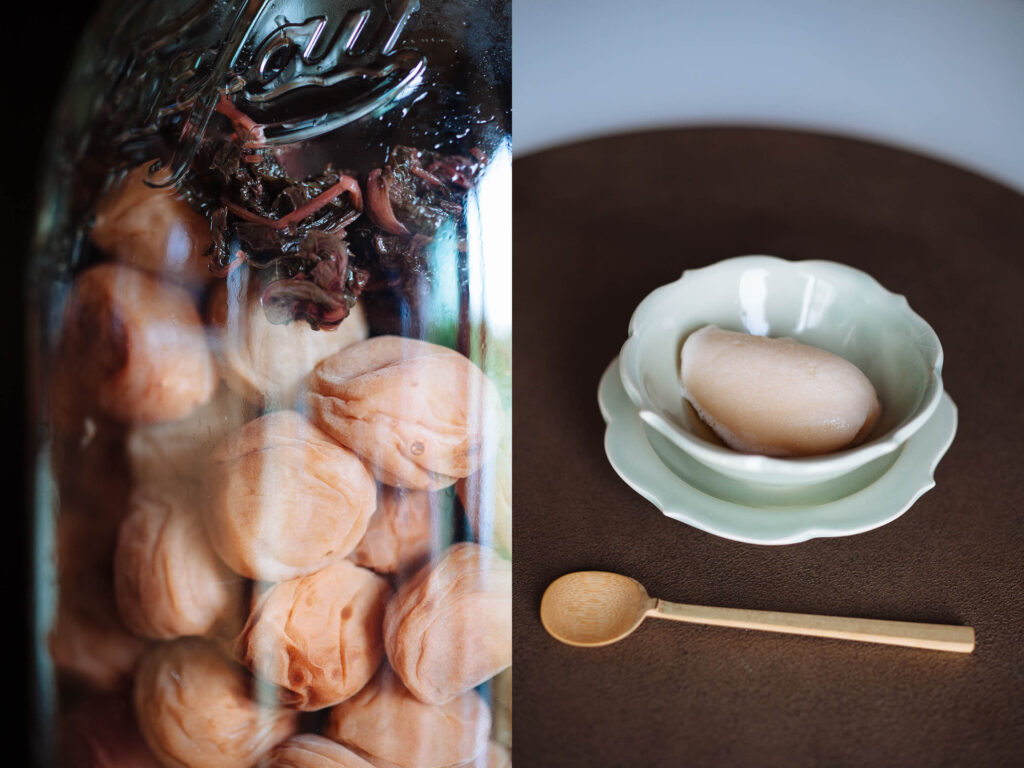
Of course the first thing that comes to mind is that the sweet fruity liqueur naturally lends itself well to cocktails and sorbets. And the green shiso in the garden that has exploded from all of the rain makes for a natural compliment. I’ve made a couple of batches of sorbet and already and I can confirm that a shiso laced ume sorbet looks like heaven on a spoon and is perfect for these hot and humid doyo days. And it just happens to be the very same color as this year’s prettiest batch of umeboshi. As was last night’s full moon that glowed a dusty rose orb on the horizon. If it were up to me, I would rename the Buck moon or the Sturgeon moon, whichever falls within this doyo period, the Plum moon.
